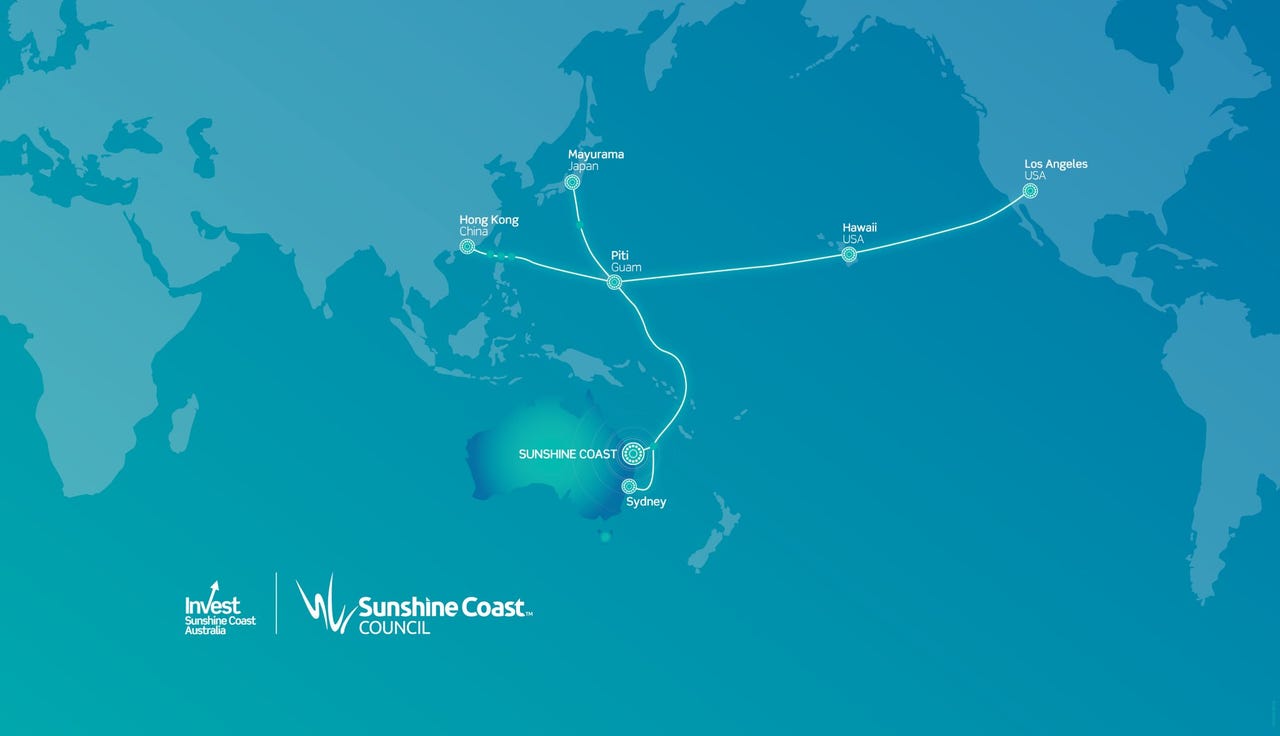Sunshine Coast Council completes AU$7.2m subsea cable landing station


The Sunshine Coast Council has announced the completion of its AU$7.2 million cable landing station at Maroochydore that will house the connection of the AU$35 million Japan-Guam-Australia subsea system.
The landing station, which was built by Vertiv, is located adjacent to the new Maroochydore city centre, a 60-hectare area that is being developed into a commercial, retail, medium and high density residential development area with new road transport, public open spaces, community facilities, and infrastructure.
With capacity for four submarine cables and electricity supplied from two different sources, the new station also features 24 data cabinets, 20 security cameras, and two 500 KVA back-up power generators.
Sunshine Coast Council Mayor Mark Jamieson said the completion of the cable landing station puts the delivery of the Sunshine Coast cable closer to being completed.
"Unlike traditional cable landing stations that are normally non-descript buildings out of view from the general public, our landing station is designed to reflect council's design vision for the Maroochydore city centre," he said.
"Our Sunshine Coast will offer the fastest data and telecommunications transmission from the eastern seaboard of Australia to Asia once the submarine cable comes ashore and is in service next year."
The landing station is part of the Sunshine Coast International Broadband Cable Network.
Announced last September, the Sunshine Coast cable, which is due to be in service by mid-2020, is being built in partnership with RTI Connectivity (RTI-C). It includes 9,700 kilometre submarine cable between Japan, Guam, and Australia (JGA), and a 550 kilometre undersea fibre optic cable that will connect the JGA cable to the new landing station.
Premier Annastacia Palaszczuk boasted that when the cable is completed, it will help generate almost AU$1 billion in new investment for the state economy.
"Better connectivity means faster processing times for bigger data and more jobs," she said.
"The cable will be able to provide Australia's fastest data and telecommunications transmission speeds to Asia and the second fastest to the USA.
"It pitches Queensland firms to the forefront of the digital economy and will be a major drawcard for businesses and investment."
As for the next steps, the Sunshine Coast Council outlined that construction for the installation of the subsea cable will begin towards the end of the year, which will involve horizontal drilling under the beach dune and approximately 700 metres offshore.
SUBSEA CABLES ACROSS THE GLOBE
- Vocus' Australia-Singapore Cable (ASC)
- Vocus' North West Cable System (NWCS) between Darwin and Port Hedland, and the new Tiwi Islands spur being added
- The Australian government's Coral Sea subsea cable, being constructed by Vocus to connect Australia, Papua New Guinea, and Solomon Islands and funded through the foreign aid budget
- Google's Dunant transatlantic subsea cable between Virginia Beach in the United States to the French Atlantic coast
- The Indigo subsea cable system
- The Indian government's Chennai-Andaman and Nicobar islands subsea cable, being built by NEC
- Southern Cross Cables' NEXT subsea cable system between Australia, New Zealand, and the United States, being built by SubPartners
- The Trident subsea cable system connecting Perth with Singapore via Indonesia
- The Jupiter subsea cable connecting the US, Japan, and the Philippines and being built by a consortium including Facebook, Amazon, SoftBank, NTT Com, PLDT, and PCCW
- The Hawaiki subsea cable between Australia, New Zealand, and the US
- Superloop's Hong Kong cable
- Telstra's Hong Kong Americas (HKA) cable between Hong Kong and the US
- Telstra's Pacific Light Cable Network (PLCN) between Hong Kong and the US
- Google's Japan-Guam-Australia (JGA) cable system
- The Asia-Pacific Gateway (APG) subsea cable connecting China, Hong Kong, Japan, South Korea, Malaysia, Taiwan, Thailand, Vietnam, and Singapore, owned by a consortium including China Telecom, China Unicom, China Mobile, NTT Communications, KT Corporation, LG Uplus, StarHub, Chunghwa Telecom, CAT, Global Transit Communications, Viettel, and VNPT, and being constructed by NEC
- The Southeast Asia Japan 2 cable (SJC2), which will have 11 landing stations in Singapore, Thailand, Cambodia, Vietnam, Hong Kong, China, South Korea, Taiwan, and Japan, being built by NEC and funded by a consortium including China Mobile International, Chunghwa Telecom, Chuan Wei, Facebook, KDDI, Singtel, SK Broadband, and VNPT
- The Bay to Bay Express Cable System (BtoBE), connecting Singapore and Hong Kong with the US, being funded by consortium including Facebook, Amazon Web Services (AWS), and China Mobile International, and being built by NEC